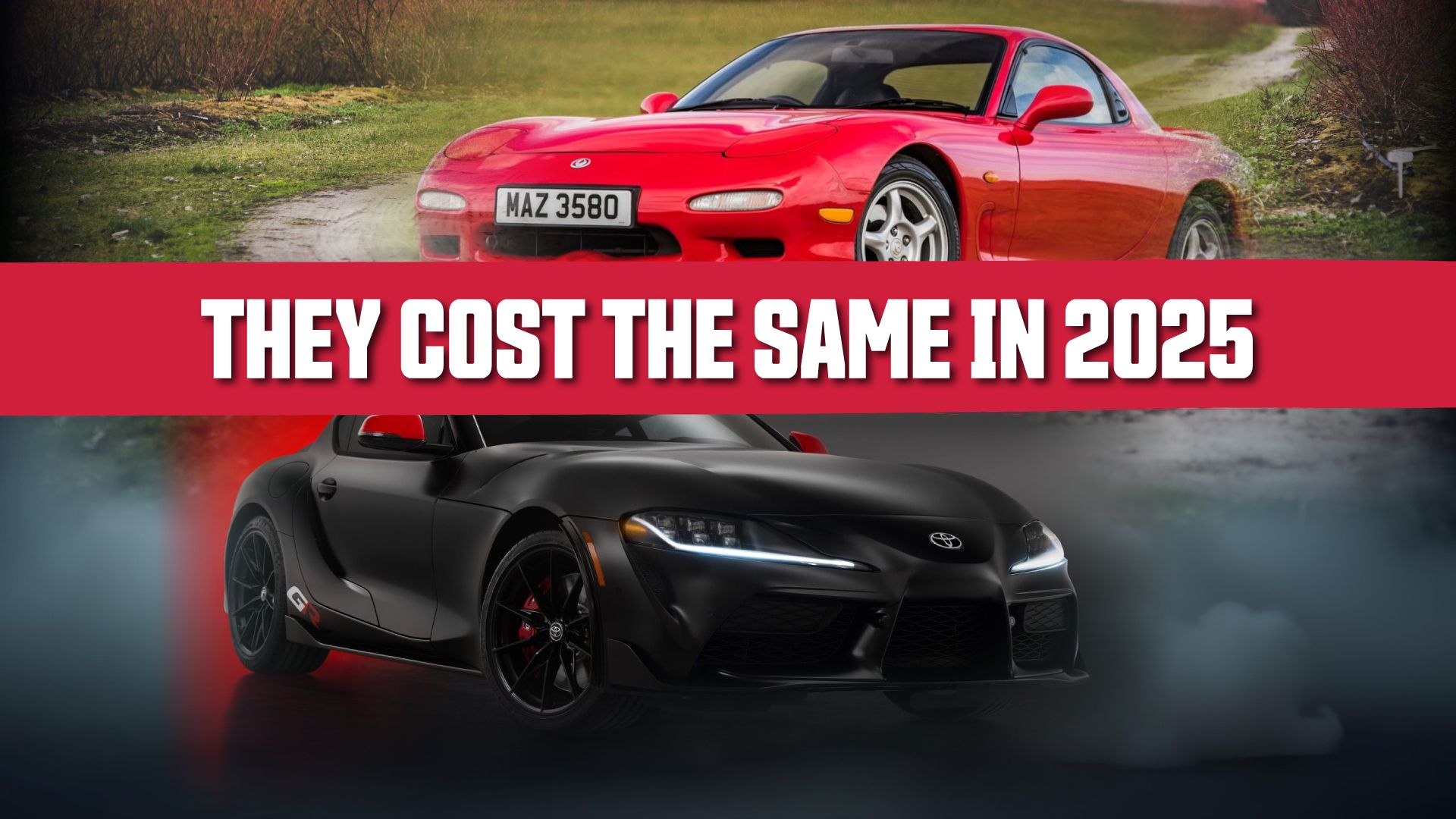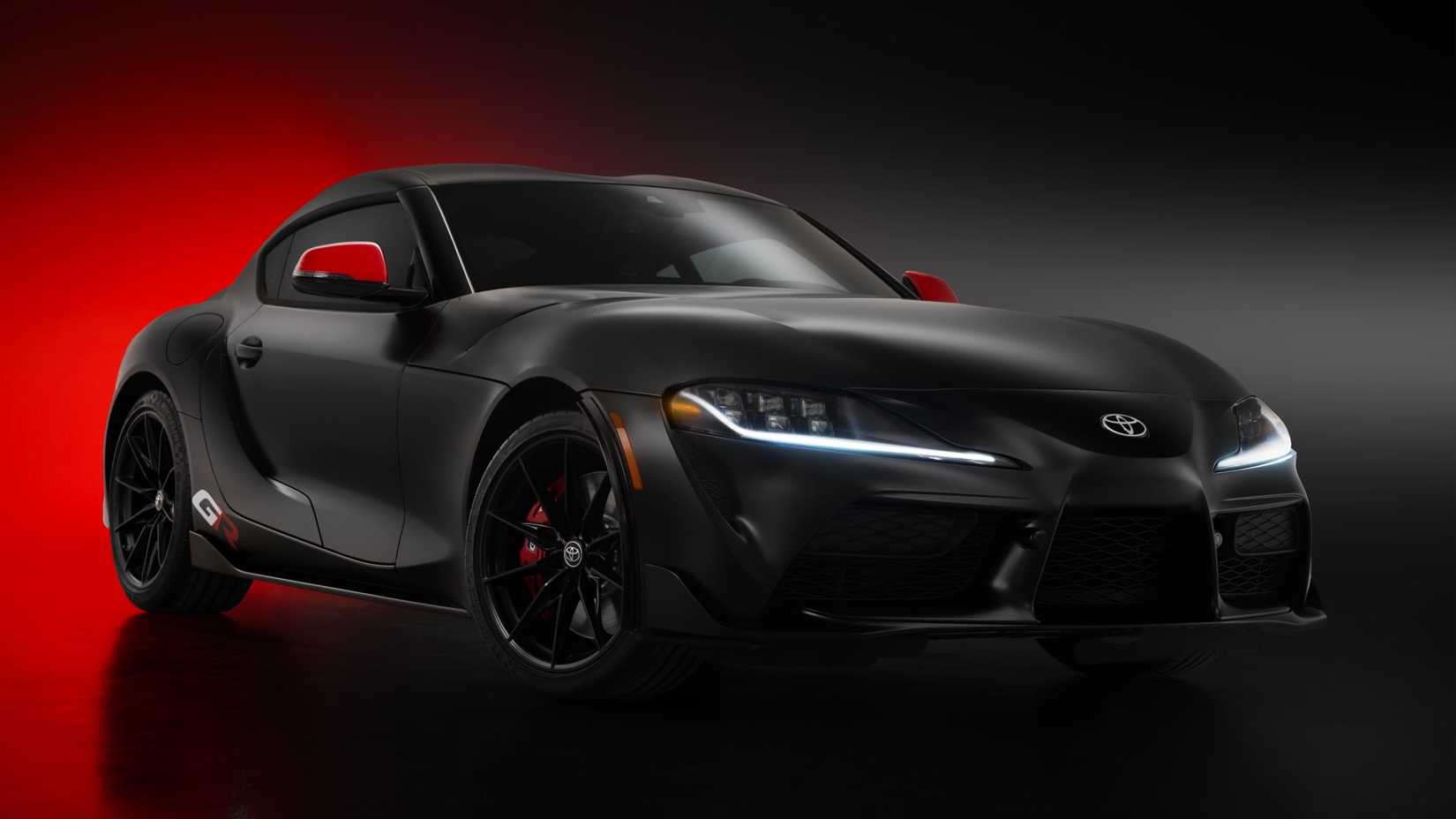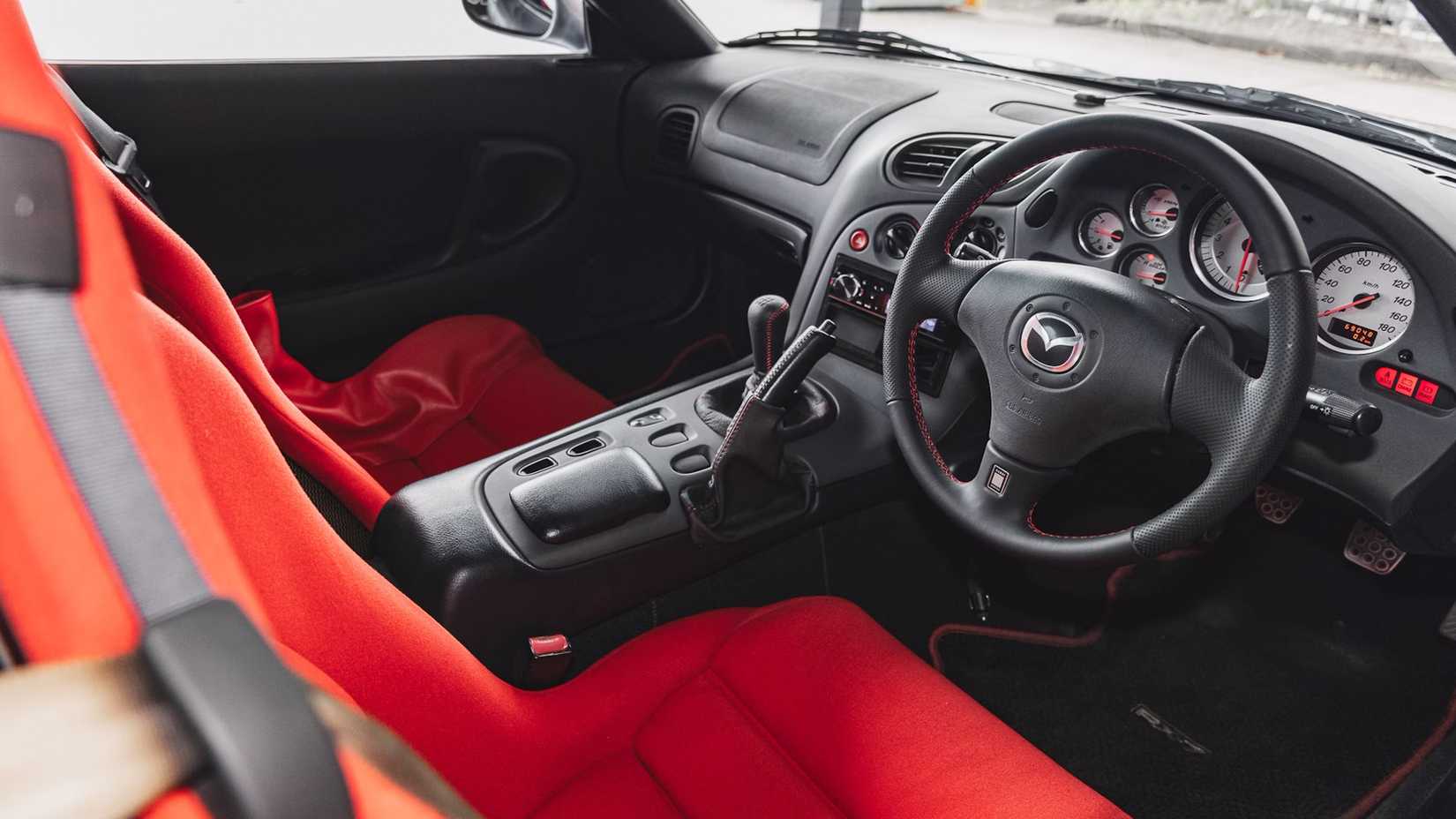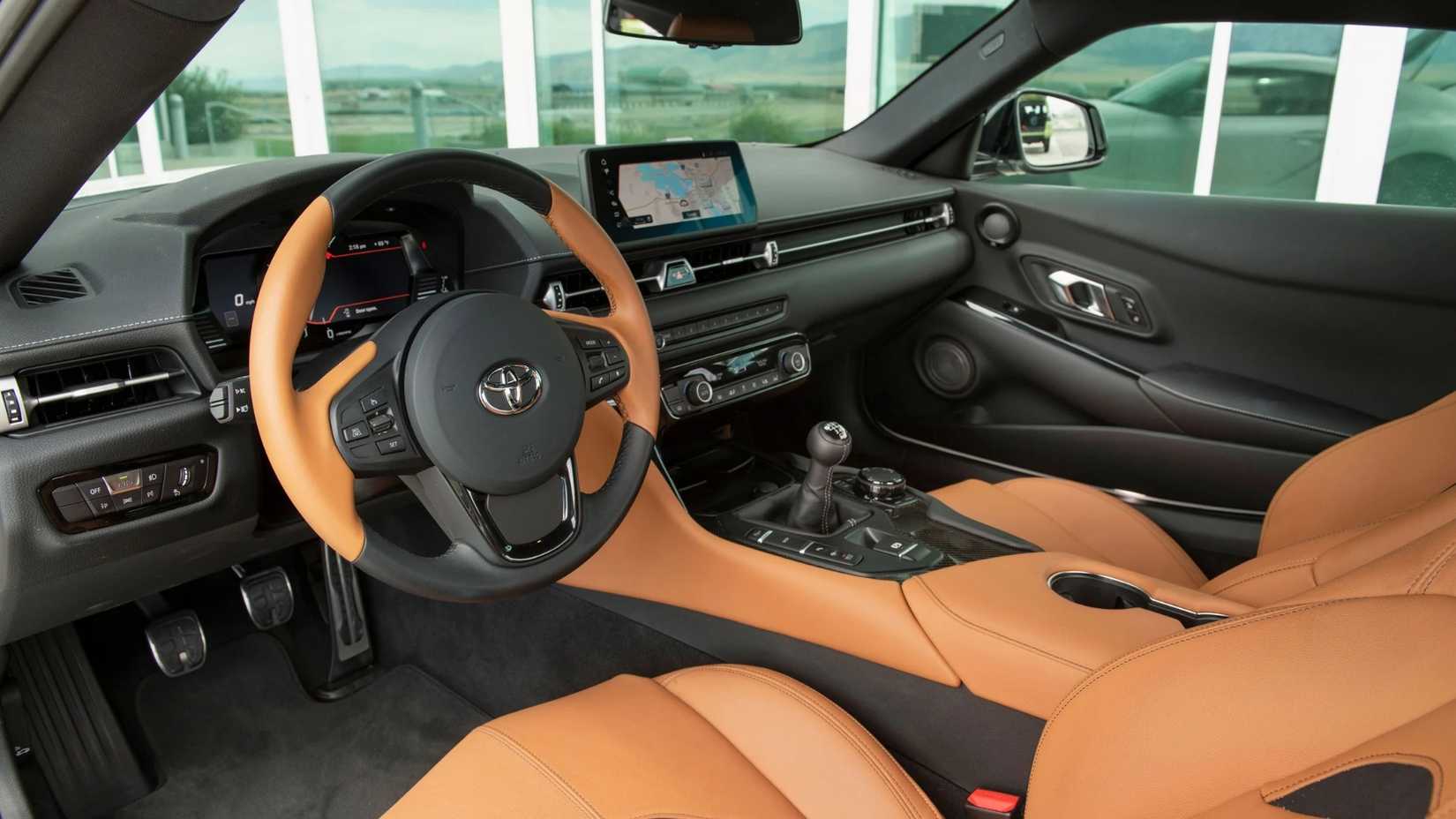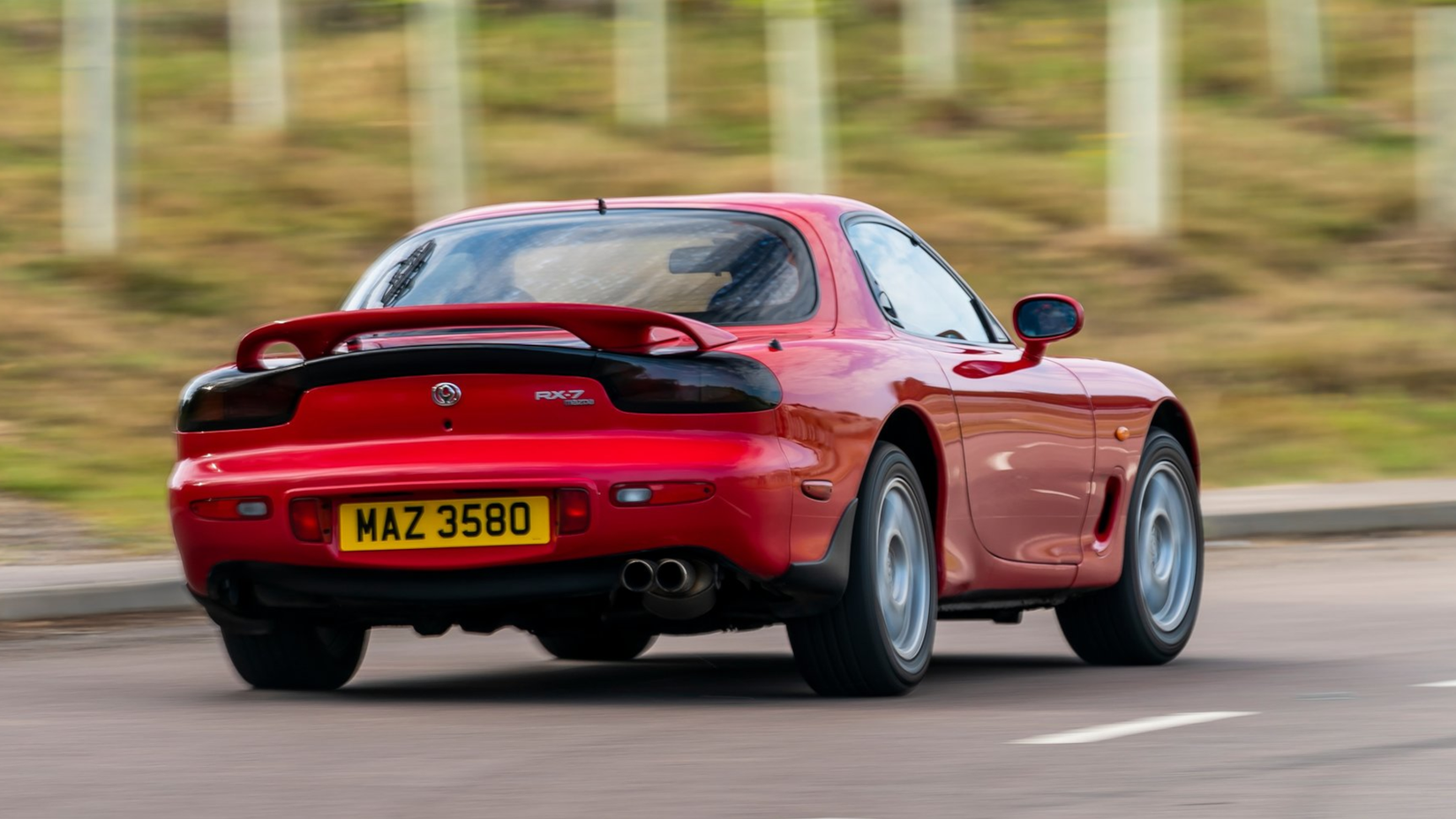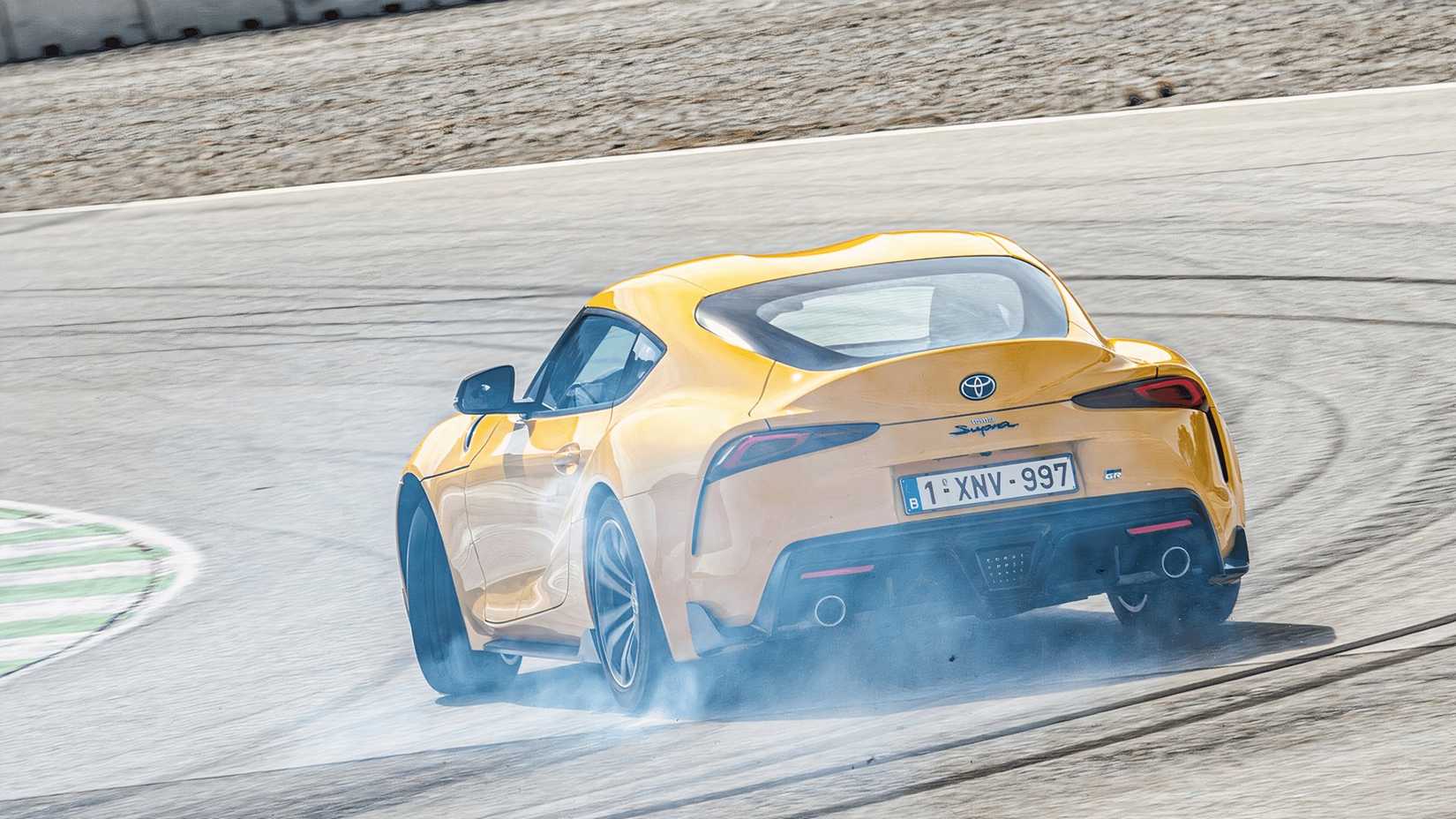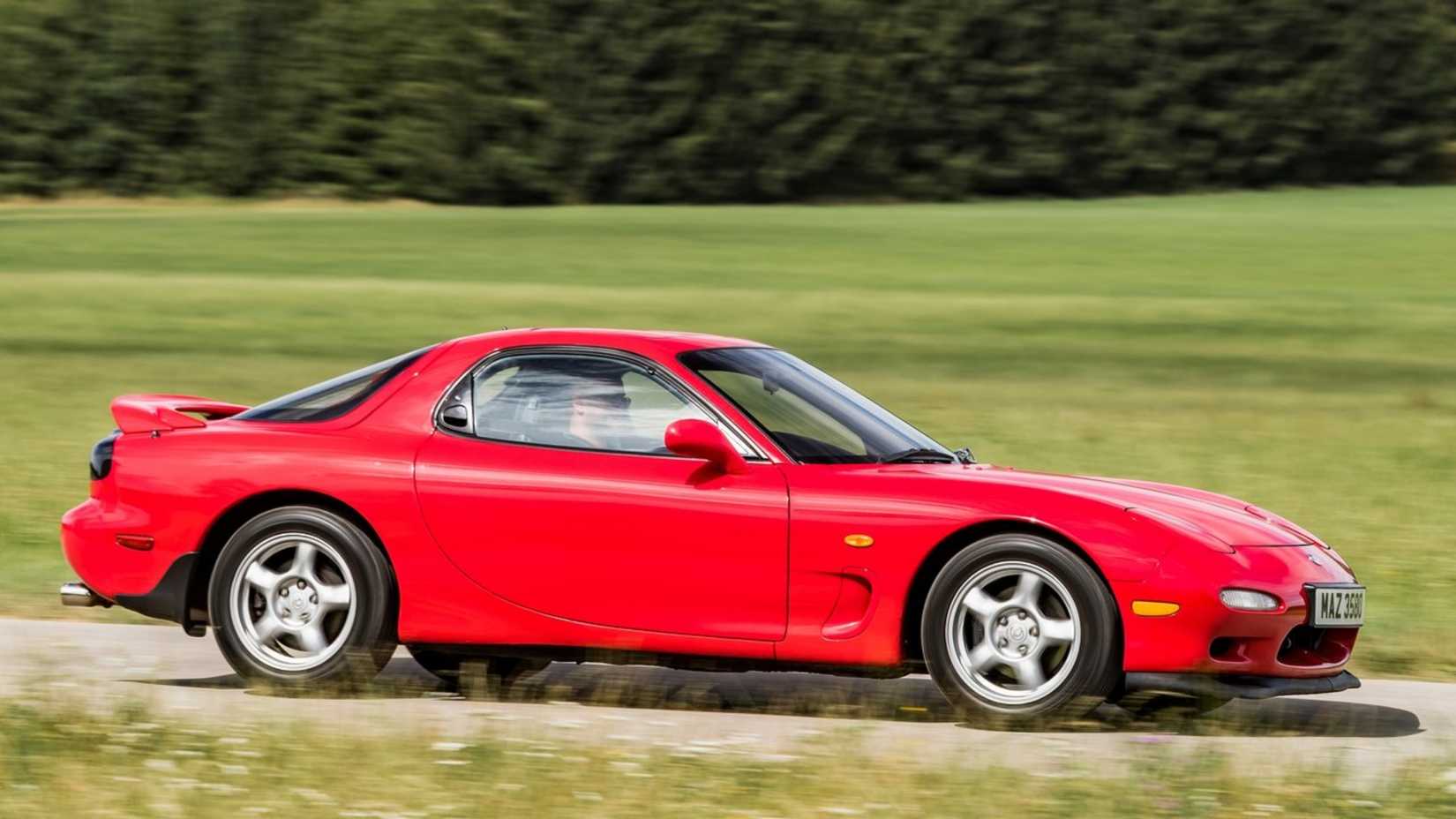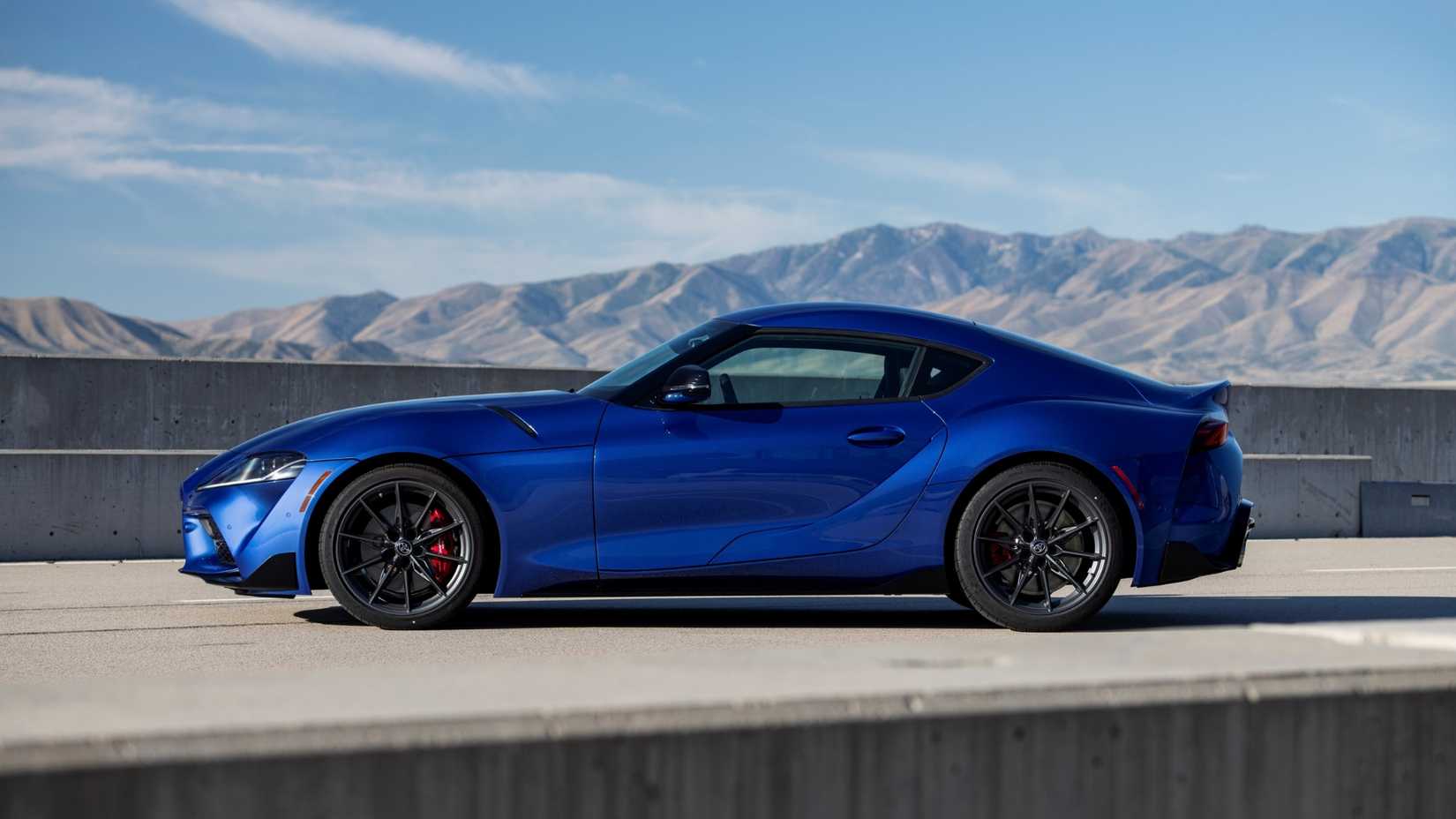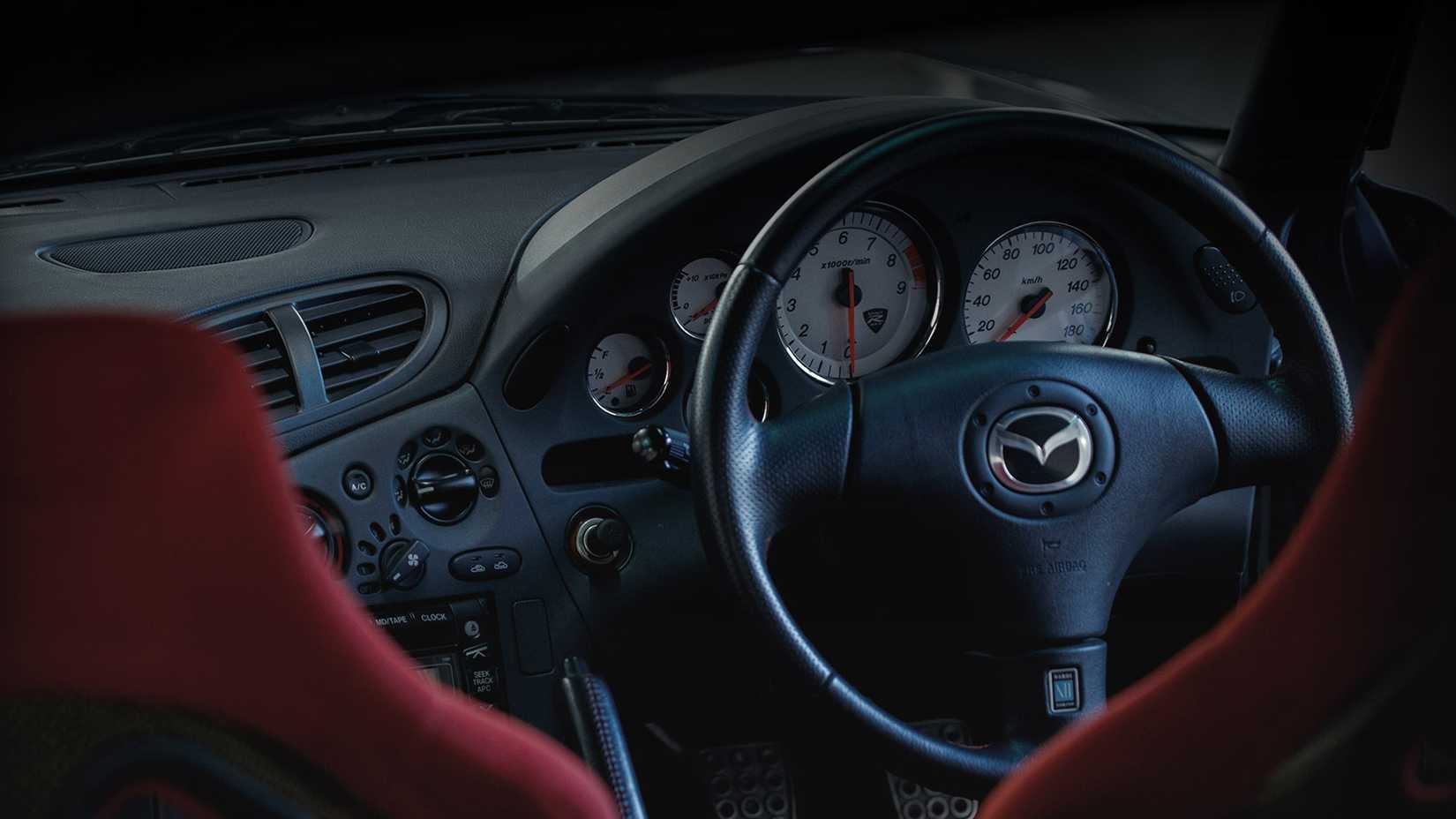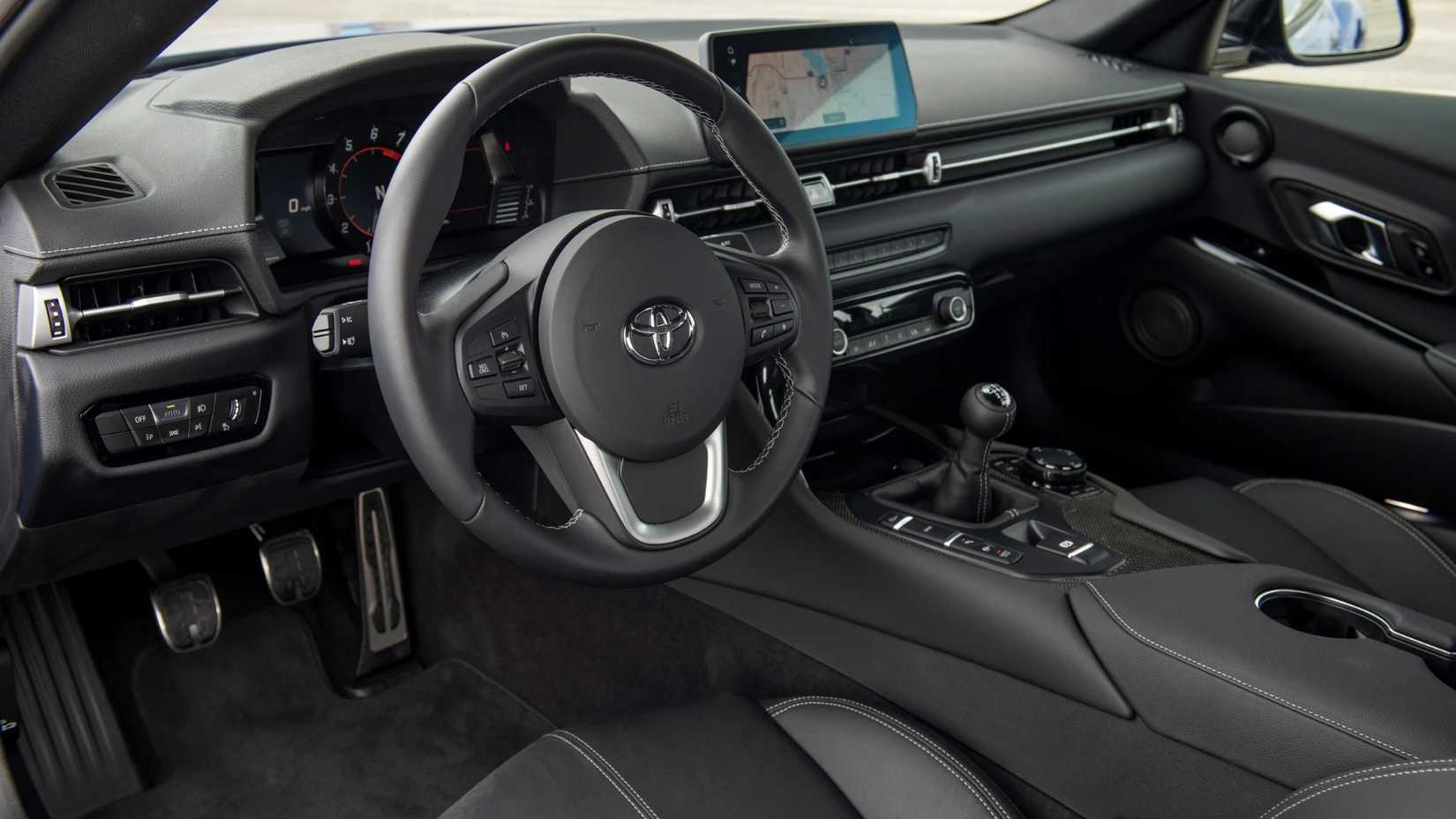The third-generation Mazda RX-7 and the current fifth-generation Toyota GR Supra are JDM icons that will impress any genuine sports car fan, though they deliver their thrills in very different ways. One surprising thing they have in common today, however, is their price: while they may have been launched decades apart, the surge in values of desirable classic cars means the two are now trading for roughly the same money.
The 2026 model year is the last for the GR Supra, and you can still pick one up with a starting price of $57,500. As for the third-generation RX-7, referred to internally as the FD, and offered briefly in the United States between the 1993 and 1995 model years, listings on popular classifieds websites such as AutoTrader typically range from about $50,000 to $60,000. Given the car’s rarity, however, you’ll often find fewer than a dozen examples for sale at any one time.
Mazda RX-7 FD: Sensuous Lines And Rotary Power
|
Engine |
Twin-turbocharged 1.3-liter Rotary |
|---|---|
|
Power |
255 hp |
|
Torque |
217 lb-ft |
|
0-60 mph |
5 seconds |
|
Top Speed |
155 mph |
The RX-7 FD launched in the US for the 1993 model year, about the same time that the legendary Mk IV Toyota Supra debuted. It delivered performance in a very different way, though, appealing to fans with its lightweight chassis and high-revving twin-rotor rotary engine – an engine known as the 13B, which has become a legend on its own due to its ability to deliver big power with relatively simple modifications.
Despite being a product of the early 90s, its performance still impresses today, holding its own even against the modern Mk 5 GR Supra in terms of driving engagement and agility.
While the FD was offered in the US for only a few years before being pulled due to emissions and cost, it continued in production for other markets until 2002. This extended production run means more examples are now beginning to become eligible for import under the 25-year rule, presenting enthusiasts with the opportunity to own an FD RX-7 without chasing increasingly inflated prices on the limited early US models.
Toyota GR Supra Mk V: Built With BMW Genes
|
Engine |
Twin-turbocharged 3.0-liter Inline-6 |
|---|---|
|
Power |
382 hp |
|
Torque |
368 lb-ft |
|
0-60 mph |
3.9 seconds |
|
Top Speed |
155 mph |
The fifth-generation Toyota GR Supra was launched for the 2020 model year, marking the return of the Supra nameplate after an 18-year hiatus. Facing declining demand for sports cars, Toyota collaborated with BMW to develop the Mk V, borrowing the Z4 roadster’s platform and pairing it with a twin-turbocharged version of BMW’s proven B58 3.0-liter inline-6 engine, linking it in some ways to the legendary 2JZ engines of Supras of old.
A turbocharged 2.0-liter inline-4, rated at 255 hp and 295 lb-ft of torque, was the standard engine, but it was dropped after the 2025 model year. Interestingly, this Supra isn’t built in a Toyota factory; instead, it is built under contract together with the Z4 at a plant operated by Magna Steyr in Austria.
Toyota plans to phase out the Mk V after the 2026 model year, with a special final edition already released to commemorate the model’s run. Fans can take heart, however, as a sixth-generation Supra is already planned, meaning enthusiasts won’t have to endure the nearly two-decade gap that separated the Mk IV from the Mk V.
Manual Transmission Is The Way To Go
The Mazda RX-7 FD was equipped exclusively with a 5-speed manual transmission, featuring close ratios designed to complement the high-revving nature of its twin-rotor rotary engine. The engine needs to be worked to deliver its performance, even with its sequentially set-up turbochargers helping to add torque lower in the rev range.
Sufficient revs, precise clutch work, and timely shifts are essential for maintaining momentum on winding roads, and this all adds to the car’s fun factor and driver engagement, though it comes at the cost of relatively high fuel consumption.
The Toyota GR Supra Mk V, by contrast, was launched with only an 8-speed automatic, with Toyota adding a 6-speed manual option for the 3.0-liter engine in 2023. This manual is based on a BMW design but uniquely tuned by Toyota for the Supra, incorporating software called Intelligent Manual Transmission (iMT). iMT optimizes engine torque during upshifts at the moment of clutch engagement and release, and ensures consistent performance on downshifts, making you feel like a pro behind the wheel. For purists, Toyota ensured that you can switch the feature off to enjoy a more analog, connected experience, echoing the engagement found in the RX-7.
Putting Power To The Ground
Both the Mazda RX-7 FD and Toyota GR Supra Mk V send their power to the rear wheels, though they do so in different ways. The RX-7 is fitted with a mechanical limited-slip differential (LSD), a straightforward, purely analog system that relies on clutches and gears to distribute torque between the rear wheels.
Together with a hydraulic steering system, it helps to give the car a predictable, mechanical feel that definitely demands some finesse from the driver, especially near the limit. Things like throttle modulation, steering input, and timing are all part of the art of maintaining balance mid-corner.
The Supra, by contrast, employs an electronically controlled active LSD, capable of adjusting lock anywhere from 0–100 percent in real time. It uses sensors and software to determine optimal torque distribution, maximizing grip and stability even in tricky conditions.
While this technology enhances performance and makes the Supra faster and more forgiving, it introduces a digital filter between the driver and the car. Combine this with other chassis systems like the adaptive dampers, electronic power steering, and various stability control programs, and that filter only becomes more noticeable.
Driving Modes: A Blessing And A Curse
The Mazda RX-7 FD and the Toyota GR Supra Mk V highlight just how much sports cars have evolved in the past three decades. In the RX-7, there are no selectable driving modes, no configurable chassis settings, and no electronic safety nets like traction and stability control which today are all too often taken for granted.
In other words, the car is what it is every time you turn the key. Its behavior is dictated purely by its mechanical setup: the rotary engine’s boost curve, the gearing of its five-speed manual, the grip of its tires, and the balance provided by its lightweight chassis, sports-tuned suspension, and limited-slip differential.
By contrast, the Supra offers driving modes that tailor throttle response, the transmission characteristics, suspension stiffness, stability control thresholds, the exhaust noise, and more. With a push of a button, it can transform from a comfortable daily driver to a sharp-edged sports car.
The included modes are Normal, Sport, and an Individual mode that can be programmed to suit a driver’s preferences. The stability control system also has its own Track mode that results in the stability control intervening later and less abruptly than normally.
The Analog Versus Digital Dash
When Mazda engineers developed the FD RX-7, one of their core goals was to keep the car as light and driver-focused as possible, which resulted in the car having a curb weight of just 2,850 pounds. Every design choice reflected this philosophy, from a fixed steering column to a minimalist cabin that only included the instruments that were truly necessary.
At the time of the RX-7’s launch, digital elements were beginning to appear in car instrument clusters – digital speedometers, tachometers, and multi-function LCDs were starting to become points of pride, and even a trip computer was something to brag about. Yet the FD RX-7 largely skipped these additions, favoring a fully analog dash that left the driver to focus on what the car was doing rather than figuring out how to connect with any mobile gear.
By contrast, today’s cars, including performance models like the Toyota GR Supra Mk V, are almost entirely digital inside. The gauge cluster is a configurable screen, paired with a large infotainment display and the option for a head-up display. Connectivity features such as Bluetooth, smartphone integration, and wireless charging are standard, while safety demands include forward-collision warnings with automatic emergency braking, pedestrian detection, active lane control, automatic high beams, and monitoring systems including rear cameras, parking sensors, and optional surround-view cameras.
While all these technologies add weight and complexity, they are expected in modern vehicles, making the analog purity of the RX-7 yet again feel increasingly rare and precious. In other words, grab one before they become unobtainium.
Sources: Toyota, Mazda, AutoTrader
